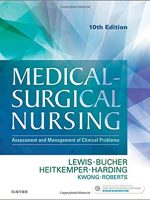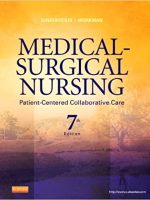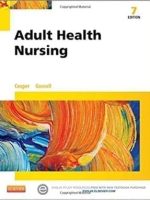The HESI EXIT RN Exam V3 2022 is a crucial assessment for nurses looking to progress in their career. The exam covers a wide range of topics including medical prescriptions, multidisciplinary conferences, patient assignments, legal and ethical issues, and more. It is essential for nurses to be well-prepared to ace this examination.
If you are preparing for the HESI EXIT RN Exam V3 2022, it is recommended to study thoroughly and practice with sample questions and answers. Understanding concepts related to patient care, legal and ethical issues, and emergency scenarios will be beneficial for success.
Additionally, staying updated with the latest nursing practices and guidelines is essential for passing the exam with flying colors. Utilizing study materials and resources from reliable sources can help you in your exam preparation.
Are you planning to take the HESI EXIT RN Exam V3 2022? Here are some frequently asked questions that may help you in your preparation:
**FAQs**
1. **What are the important topics covered in the HESI EXIT RN Exam V3 2022?**
– The exam covers topics such as medical prescriptions, patient assignments, legal and ethical issues, emergency scenarios, and more.
2. **How can I best prepare for the exam?**
– It is recommended to study thoroughly, practice with sample questions, and stay updated with the latest nursing practices.
3. **Where can I find reliable study materials for the exam?**
– You can find study materials from reputable sources such as nursing textbooks, online resources, and practice exams.
4. **Is it essential to understand legal and ethical issues for the exam?**
– Yes, having a good understanding of legal and ethical issues in nursing is crucial for the exam.
5. **What should I focus on during my exam preparation?**
– Focus on patient care, critical thinking, decision-making, and nursing interventions to excel in the exam.
In conclusion, the HESI EXIT RN Exam V3 2022 is a comprehensive assessment that tests nurses on various aspects of nursing care and practice. By studying diligently, practicing with sample questions, and staying updated with nursing guidelines, nurses can increase their chances of passing the exam successfully. Good luck with your exam preparation!Cleft lip is a common birth defect that affects infants, and it can be distressing for parents to navigate the care needed for their child. Providing proper education and guidance to parents is crucial in ensuring the well-being of the child with a cleft lip. Nurses play a vital role in supporting and educating parents on how to care for their child with this condition.
Here are some key points that nurses should educate parents on when caring for a child with a cleft lip:
1. **Positioning after Feeding**: Placing the child in a prone (lying face down) position after each feeding can help prevent regurgitation and aid in digestion.
2. **Rest Periods During Feedings**: Encouraging parents to offer rest periods during feedings can help the child digest food more easily and reduce the risk of aspiration.
3. **Recognizing Symptoms**: Parents should be educated on identifying concerning symptoms such as difficulty feeding, poor weight gain, and respiratory issues, which may indicate complications related to the cleft lip.
4. **Consulting Healthcare Providers**: It is important for parents to keep in touch with healthcare providers and attend regular check-ups to monitor the child’s growth and development.
By providing parents with the necessary information and support, nurses can help alleviate their concerns and empower them to care for their child with a cleft lip effectively.
### FAQ
1. **What is a cleft lip?**
A cleft lip is a facial malformation that occurs when the tissues that form the upper lip do not fully join during fetal development, leading to a gap or opening in the lip.
2. **How is a cleft lip treated?**
Treatment for a cleft lip usually involves surgery to close the gap in the lip and may also include speech therapy and other interventions to address potential complications.
3. **Can a cleft lip affect a child’s feeding?**
Yes, a cleft lip can impact a child’s ability to feed effectively due to the opening in the lip that may interfere with sucking and swallowing.
4. **What support is available for parents of children with a cleft lip?**
Parents of children with a cleft lip can access support groups, counseling services, and educational resources to help them navigate the challenges associated with the condition.
### Conclusion
Caring for a child with a cleft lip requires specialized knowledge and support. Nurses play a crucial role in educating parents on how to care for their child and address the unique challenges that come with this condition. By providing guidance, reassurance, and access to resources, nurses can help parents feel more confident in managing their child’s care and ensuring their well-being.When it comes to neurological diagnostic checks and the care of clients with various medical conditions, nurses play a crucial role in providing education, support, and monitoring. Ensuring that clients understand the procedures they are undergoing, as well as any necessary follow-up care, is essential for their overall well-being. Let’s take a closer look at some common scenarios and considerations that nurses may encounter in their practice.
### FAQs:
**Q: Why is it important for nurses to provide education about diagnostic tests and medications to clients?**
A: Education helps clients understand the purpose of the tests or medications, how to prepare for them, what to expect during and after the procedures, and how to take medications correctly.
**Q: What should a nurse do if a client expresses feelings of despair or asks existential questions?**
A: Nurses should provide emotional support, active listening, empathy, and may need to refer the client to a mental health professional for further assessment and support.
**Q: How can a nurse determine if a client needs further education on crutch walking techniques?**
A: Assessing the client’s ability to demonstrate safe and correct crutch walking techniques is essential. If the client’s statements indicate a lack of understanding or incorrect knowledge, further education is needed.
**Q: What are some potential complications or concerns that nurses should watch for in clients undergoing orthopedic procedures?**
A: Complications such as excessive drainage, signs of infection, pain management issues, or changes in vital signs should be closely monitored and reported promptly.
### Conclusion:
In conclusion, nurses play a vital role in ensuring the well-being of clients undergoing diagnostic tests and managing various medical conditions. By providing education, support, and proactive monitoring, nurses can help clients navigate their healthcare journeys with confidence and better outcomes. Being attentive to client needs, recognizing red flags that require follow-up, and engaging in ongoing professional development are key aspects of nursing practice in these settings. By staying informed and proactive, nurses can contribute significantly to the care and recovery of their clients.When working in healthcare, nurses often come across various scenarios that require quick thinking and careful consideration. From managing medications to identifying signs of distress in patients, nurses play a crucial role in providing quality care to their patients. Let’s delve into some common nursing scenarios and the actions nurses should take in each situation.
1. **Monitoring Side Effects of Medication**: Nurses should always monitor patients for any potential side effects of medications they are taking. For instance, if a patient is prescribed a medication that may cause hypertension, the nurse should regularly check the patient’s blood pressure and report any abnormalities to the healthcare provider.
2. **Recognizing Signs of Grieving**: Understanding the stages of grief is essential for nurses, especially when caring for patients with terminal illnesses. For instance, if a patient expresses a desire to live longer for specific reasons, such as seeing their child graduate from college, it may indicate the bargaining stage of grief.
3. **Interpreting Lab Results**: Nurses often need to interpret lab results to provide timely and appropriate care to their patients. For example, analyzing arterial blood gas (ABG) results can help nurses identify acid-base imbalances, such as compensated respiratory acidosis or metabolic alkalosis.
4. **Assessing Vital Signs**: Regularly assessing vital signs is a crucial aspect of nursing care. For example, if a nurse finds a four-year-old patient with a low blood pressure reading, they may need to inquire about the child’s usual pulse rate, encourage rest, and inform the healthcare provider of the findings.
5. **Cultural Sensitivity**: Nurses must be culturally sensitive when caring for patients from diverse backgrounds. For example, understanding specific cultural practices, such as allowing Buddhist families to perform ritual rites at the bedside of a deceased loved one, is essential for providing respectful and compassionate care.
**FAQs**
1. *Why is it important for nurses to monitor medication side effects?*
Monitoring medication side effects helps nurses prevent adverse reactions in patients and provide timely interventions if necessary.
2. *How can nurses support patients in different stages of grief?*
Nurses can offer emotional support, active listening, and resources to help patients cope with the grieving process.
3. *Why do nurses need to be culturally sensitive in their care?*
Cultural sensitivity helps nurses provide patient-centered care, respect individual beliefs and practices, and foster positive relationships with patients and their families.
**Conclusion**
Nursing is a multifaceted profession that requires a combination of clinical expertise, critical thinking skills, and empathy. By being attentive to medication side effects, understanding stages of grief, interpreting lab results, assessing vital signs, and practicing cultural sensitivity, nurses can deliver holistic and compassionate care to their patients. Staying informed, continually learning, and adapting to different situations are essential for nurses to excel in their roles and make a positive impact on patient outcomes.Religious practices and beliefs often play a significant role in end-of-life care and decision-making processes in healthcare settings. Respect for different cultural and religious traditions is crucial in providing holistic and patient-centered care. In this context, healthcare providers must be knowledgeable and sensitive to the diverse needs and preferences of patients from various religious backgrounds.
For example, Muslim families may request the placement of mirrors after the passing of a loved one, Hindu families may request bathing rituals post-death, and certain dietary restrictions or practices may need to be observed based on religious beliefs. In the realm of nursing care, education and awareness are key to meeting the unique needs of each patient.
Here are some common scenarios related to various medical conditions and healthcare practices:
1. **Laénnec’s cirrhosis**: Vitamin supplementation, especially Vitamin B1, may be crucial for individuals with this condition to support liver function.
2. **Celiac disease**: Effective patient education includes avoiding gluten-containing foods like wheat, barley, and rye, while opting for gluten-free alternatives like eggs or rice.
3. **Renal failure**: Patients with this condition may require specific dietary modifications to manage their kidney health, such as avoiding high potassium foods like orange juice.
4. **Glaucoma**: Medications like pilocarpine may be used to manage intraocular pressure in glaucoma patients.
5. **Clozaril (Clozapine)**: Patients taking this medication should be aware of potential side effects and the importance of monitoring their health, including glucose intake and infection risks.
FAQs
Q: How important is it for healthcare providers to consider a patient’s religious and cultural beliefs in their care?
A: It is crucial for healthcare providers to respect and accommodate the religious and cultural beliefs of patients to ensure patient-centered care and overall well-being.
Q: What are some common dietary restrictions based on religious beliefs that healthcare providers may encounter?
A: Dietary restrictions may include avoiding certain foods like pork (for Muslims and Jews), beef (for Hindus), or adhering to specific fasting practices during religious holidays.
Q: How can healthcare providers improve their cultural competence in caring for patients from diverse backgrounds?
A: Healthcare providers can undergo cultural competence training, engage in ongoing education, and actively listen to patients to better understand their unique needs and preferences.
In conclusion, understanding and incorporating religious and cultural beliefs into healthcare practices are essential for providing respectful, compassionate, and effective care to patients. By emphasizing cultural competence and patient-centered approaches, healthcare providers can foster trust, improve outcomes, and promote overall well-being for all individuals under their care.Providing safe and effective care in healthcare settings involves adhering to specific protocols and guidelines to ensure the well-being of patients. From managing dietary requirements to infection control practices, healthcare professionals must be well-informed and attentive to detail. Let’s delve deeper into some key points highlighted in the post and explore their significance in healthcare settings.
**Understanding Contraindications and Precautions in Healthcare:**
1. **Cervical Traction and Neck Movements:** After the removal of an indwelling catheter, it is crucial to be cautious with cervical traction. Flexion and extension of the neck should be avoided due to the potential risks involved, such as injury to the cervical spine.
2. **Dietary Restrictions for Celiac Disease:** Children with Celiac disease should follow a gluten-free diet. Oatmeal, along with barley, rye, and wheat, should be avoided to prevent adverse reactions. Healthcare providers play a vital role in educating patients and caregivers about suitable dietary choices.
3. **Infection Prevention during Procedures:** Using sterile gloves during tracheal suctioning is essential to prevent infections. Proper hand hygiene and equipment sterilization are critical in reducing the risk of healthcare-associated infections.
4. **Child Safety in Vehicles:** Ensuring that newborns are secured in rear-facing car seats with appropriate restraints is paramount for their safety. Following guidelines for child passenger safety helps prevent injuries during transportation.
5. **Infection Control Measures:** Understanding how different diseases are transmitted, such as VRE through direct contact, and implementing appropriate precautions like protective isolation or airborne protocols, is crucial in maintaining a safe healthcare environment.
**FAQs:**
1. **What is the significance of using sterile gloves during tracheal suctioning?**
– Sterile gloves help prevent infections and maintain aseptic conditions during procedures, reducing the risk of complications for patients.
2. **Why are dietary restrictions important for individuals with Celiac disease?**
– Dietary restrictions help manage symptoms and prevent adverse reactions triggered by gluten consumption in patients with Celiac disease.
3. **Why is securing newborns in rear-facing car seats essential?**
– Rear-facing car seats provide optimal protection for infants in case of accidents, reducing the risk of injuries during travel.
**Conclusion:**
Adhering to safety protocols, infection control practices, and patient-specific guidelines are fundamental aspects of providing quality healthcare. Healthcare professionals must stay updated on best practices to ensure the safety and well-being of patients in various clinical settings. By following established protocols and guidelines, healthcare providers can mitigate risks and promote positive outcomes for patients under their care.Dumping syndrome can be a challenging condition to manage for individuals who experience it. It is crucial for healthcare providers to educate patients on lifestyle changes and dietary modifications that can help alleviate symptoms and improve their quality of life. From avoiding certain food items to eating in a specific manner, understanding how to navigate daily routines can make a significant difference for those with dumping syndrome.
When it comes to administering medications to pediatric patients, nurses must be diligent in ensuring the correct dosage and timing. Assessing a child’s medical history can provide valuable insights into potential allergies or adverse reactions to specific medications. Additionally, making the medication palatable for the child by mixing it with food like applesauce can help improve adherence to the treatment regimen.
For patients with sickle cell anemia, avoiding infections is crucial to prevent triggering a sickle cell crisis. Educating patients on the importance of infection control measures, such as staying away from individuals with infections and avoiding certain activities, can help them manage their condition effectively and reduce the risk of complications.
As healthcare providers, it is essential to stay informed about best practices in patient care and medication administration. By following guidelines on administering medications, monitoring for adverse reactions, and providing appropriate patient education, healthcare professionals can ensure the safety and well-being of their patients.
In conclusion, effective patient care requires a comprehensive approach that encompasses proactive measures to prevent complications, meticulous attention to medication administration, and clear patient education. By staying up to date on the latest guidelines and best practices, healthcare providers can deliver safe and quality care to patients with various medical conditions.
—
### FAQ
#### 1. What is dumping syndrome?
Dumping syndrome is a condition that occurs when food moves too quickly from the stomach to the small intestine. It can result in symptoms like nausea, vomiting, abdominal cramping, and diarrhea.
#### 2. How can dumping syndrome be managed?
Managing dumping syndrome often involves dietary modifications, such as eating smaller meals more frequently, avoiding certain foods high in sugar or fat, and eating meals in a specific order. Lifestyle changes, medication, and in severe cases, surgery may also be recommended.
#### 3. What are some common medications used to treat dumping syndrome?
Medications like antidiarrheals, anti-nausea drugs, and medications to slow down the emptying of the stomach may be prescribed to help manage symptoms of dumping syndrome.
#### 4. What role do healthcare providers play in managing dumping syndrome?
Healthcare providers play a critical role in educating patients about dumping syndrome, providing guidance on dietary and lifestyle changes, monitoring medication use, and offering support to help patients effectively manage their condition.
### Conclusion
Managing dumping syndrome requires a multidisciplinary approach, involving healthcare providers, patients, and caregivers working together to implement effective strategies for symptom management and improved quality of life. By emphasizing patient education, medication adherence, and lifestyle modifications, healthcare professionals can help individuals with dumping syndrome navigate their condition more successfully.When it comes to monitoring the fetal heart rate (FHR) during pregnancy, it is crucial to understand the normal range and how to interpret deviations from it. The FHR typically ranges between 120-160 beats per minute, with fluctuations of 6-25 beats per minute indicating a well-oxygenated and functioning central nervous system. However, if a pregnant individual presents with a consistent FHR of 132 beats per minute, it is essential to prioritize their assessment for fetal distress.
Additionally, cracked nipples in breastfeeding mothers should not be deemed a contraindication to breastfeeding. Instead, mothers can be advised to expose their nipples to air for 10-20 minutes after feeding, rotate the baby’s position for each feeding, and ensure proper latch onto the areola, not just the nipple.
In emergency situations like cardiac arrest in adults, following the American Heart Association’s recommended CPR sequence (C-A-B-D – Compressions, Airway, Breathing, Defibrillation) is crucial to provide rescue assistance and maintain oxygen and blood flow to the heart and brain.
Furthermore, when caring for a client with Tuberculosis (TB), airborne precautions, including placing the individual in a negative pressure room with a closed door and using a particulate respirator mask, are essential. Understanding the appropriate precautions for specific conditions like TB helps maintain a safe and infection-controlled environment.
In healthcare settings, ensuring client safety is paramount. If a nurse displays behaviors that suggest impairment, it is crucial to relieve them of their assigned duties and report the situation to the nursing supervisor for appropriate action. Clear documentation of the incident is essential for accountability and further investigation.
In cases of emergencies like fires in healthcare facilities, following sequential priorities such as rescuing clients, calling for additional help, confining the fire, and extinguishing the fire is crucial for ensuring everyone’s safety.
Reporting suspected child abuse and maltreatment is mandated by most states to protect children from further harm. Clear and objective documentation of such cases is vital, as the records may be used in legal proceedings.
Lastly, when prioritizing care for clients with conditions like cocaine use or manic bipolar disorder, understanding the urgency of managing potentially life-threatening symptoms is essential. Addressing hallucinations, tachycardia, and respiratory depression associated with cocaine use takes precedence in such situations.
It is crucial for healthcare providers to be well-versed in prioritizing care based on the urgency of the situation and following established protocols to ensure the safety and well-being of clients in various healthcare settings.
—
### FAQ
#### 1. What is the normal range of fetal heart rate during pregnancy?
The fetal heart rate typically ranges between 120-160 beats per minute.
#### 2. What should be done if a pregnant individual presents with a consistent fetal heart rate of 132 beats per minute?
It is essential to prioritize their assessment for fetal distress in such cases.
#### 3. How should cracked nipples in breastfeeding mothers be managed?
Cracked nipples should not be a contraindication to breastfeeding. Mothers can be advised to expose their nipples to air, rotate the baby’s position for each feeding, and ensure a proper latch onto the areola.
#### 4. What are the sequential priorities to follow in case of a fire in a healthcare facility?
The priorities include rescuing clients, calling for additional help, confining the fire, and extinguishing the fire.
### Conclusion
Prioritizing care based on the urgency of the situation is crucial in healthcare settings to ensure the safety and well-being of clients. Understanding normal ranges, appropriate interventions, and following established protocols are key factors for providing effective and safe care in various healthcare scenarios. Healthcare providers must stay informed and trained to handle emergencies and prioritize care effectively.










Be the first to review “HESI EXIT RN EXAM V3 2022”